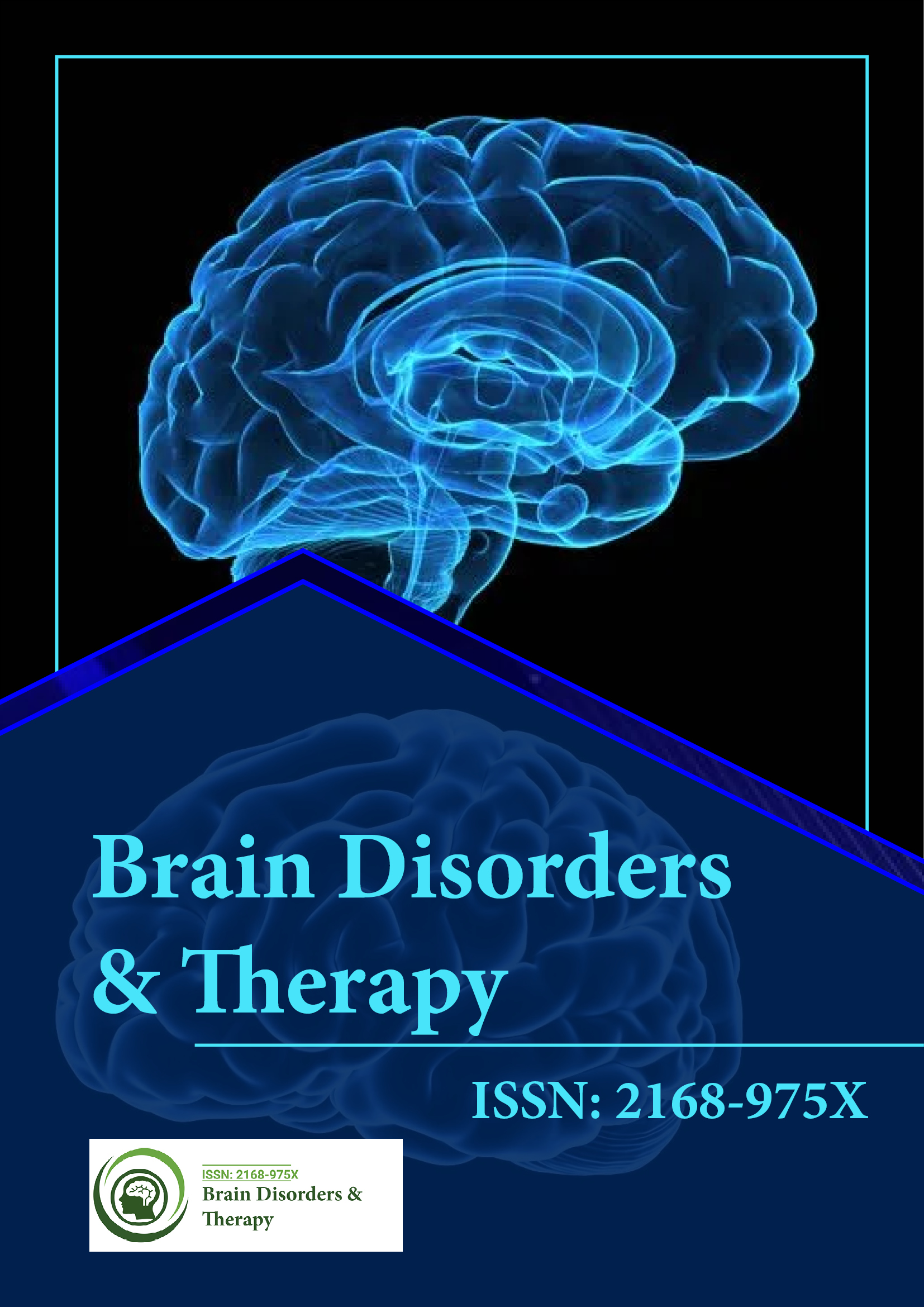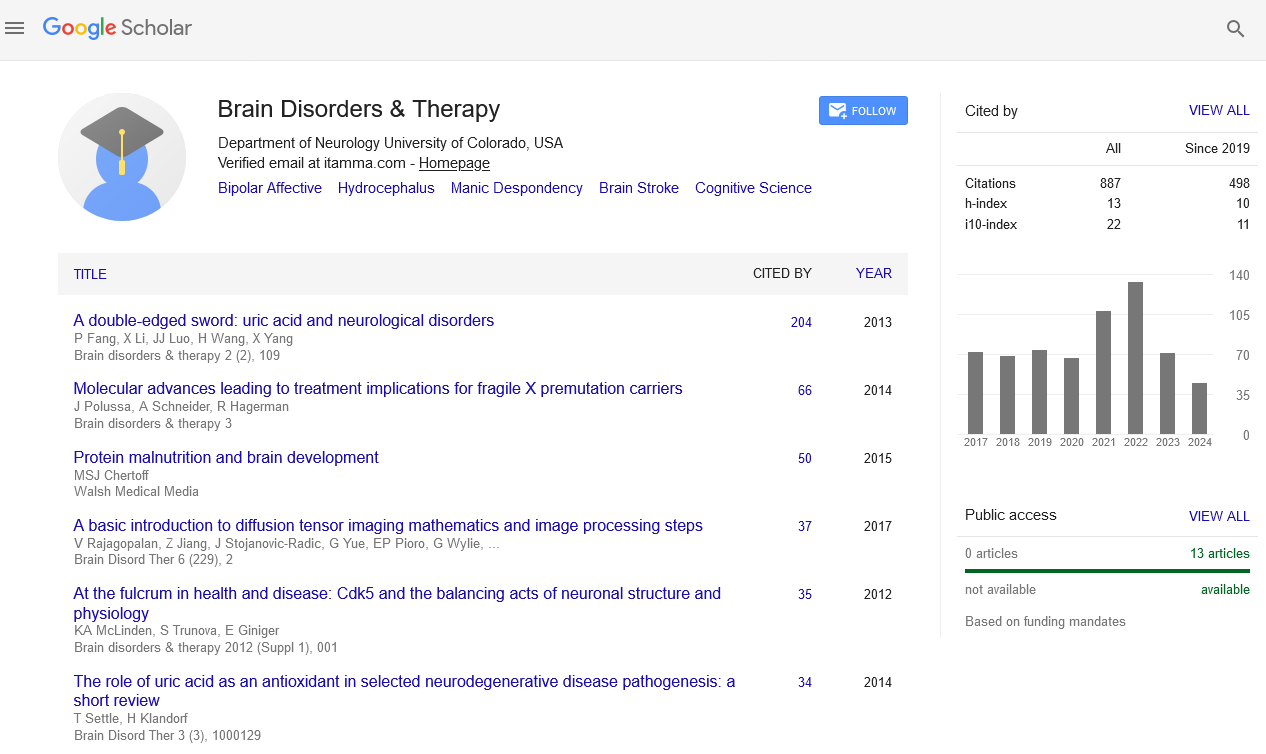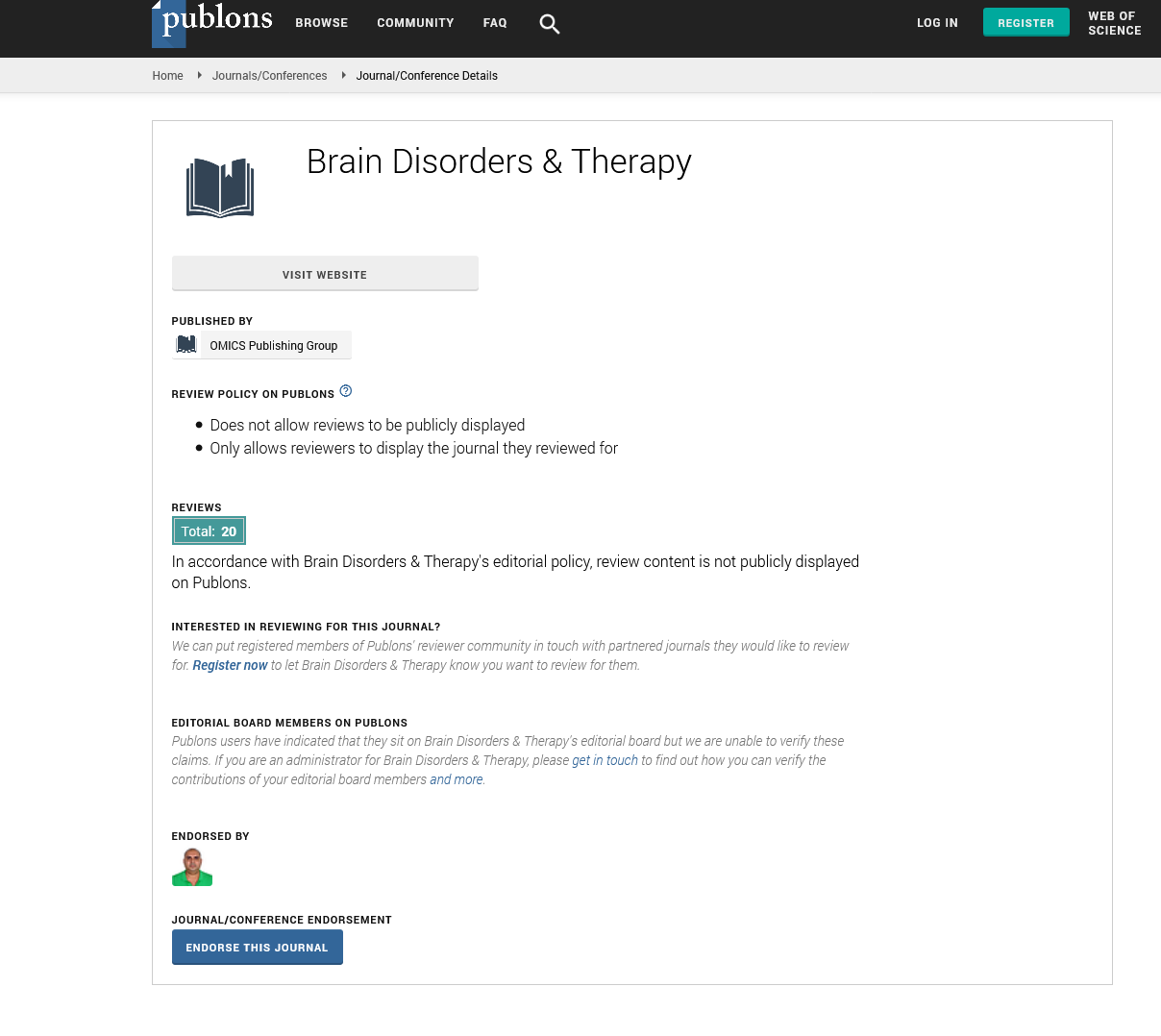Indexed In
- Open J Gate
- Genamics JournalSeek
- JournalTOCs
- RefSeek
- Hamdard University
- EBSCO A-Z
- OCLC- WorldCat
- Publons
- Geneva Foundation for Medical Education and Research
Useful Links
Share This Page
Journal Flyer

Open Access Journals
- Agri and Aquaculture
- Biochemistry
- Bioinformatics & Systems Biology
- Business & Management
- Chemistry
- Clinical Sciences
- Engineering
- Food & Nutrition
- General Science
- Genetics & Molecular Biology
- Immunology & Microbiology
- Medical Sciences
- Neuroscience & Psychology
- Nursing & Health Care
- Pharmaceutical Sciences
Perspective - (2025) Volume 14, Issue 2
Interaction of Immune Signals and Metabolic Strain in Brain Disorders
Premysl Gruetter*Received: 26-May-2025, Manuscript No. BDT-25-29722 ; Editor assigned: 28-May-2025, Pre QC No. BDT-25-29722 (PQ); Reviewed: 11-Jun-2025, QC No. BDT-25-29722 ; Revised: 18-Jun-2025, Manuscript No. BDT-25-29722 (R); Published: 25-Jun-2025, DOI: 10.35248/2168-975X.25.14.302
Description
The Central Nervous System (CNS) is highly vulnerable to damage due to its metabolic demands, structural complexity and limited regenerative capacity. When exposed to injury or disease, the brain activates a sequence of molecular events designed to protect and repair neural tissue. Among these responses, inflammation and cellular stress play central roles. These processes are double-edged: while they can limit damage and support recovery, their dysregulation often exacerbates neuronal injury and accelerates disease progression. Understanding how these responses are initiated, regulated and resolved is essential for deciphering the mechanisms of CNS pathology and for developing effective therapies.
Inflammatory responses in the CNS
Inflammation in the CNS is primarily mediated by glial cells and, in some cases, infiltrating immune cells. Microglia, the brain’s resident immune sentinels, shift from a surveillant state to a reactive one upon detecting danger signals. This transition is characterized by cytokine release, phagocytosis and morphological changes. While protective in the acute phase, prolonged microglial activation sustains inflammatory signaling and contributes to neurotoxicity. Astrocytes also participate by undergoing reactive astrogliosis. They regulate glutamate uptake, secrete trophic factors and form glial scars that contain damage. However, excessive gliosis can restrict synaptic remodeling and axonal regrowth, limiting recovery. In conditions where the Blood-Brain Barrier (BBB) is compromised, such as multiple sclerosis or meningitis, peripheral immune cells infiltrate the CNS. T cells, neutrophils and macrophages amplify local inflammation and release cytotoxic molecules that damage neurons and myelin. Thus, the inflammatory landscape of the CNS reflects a balance between repair-oriented and destructive responses.
Cellular stress pathways in CNS disorders
Cellular stress responses are triggered when neurons and glia experience disruptions in homeostasis due to trauma, ischemia, or neurodegenerative processes. Oxidative stress is one of the most pervasive forms, arising from excessive Reactive Oxygen Species (ROS) that overwhelm antioxidant defenses. Neurons are particularly vulnerable because of their high oxygen consumption and lipid-rich membranes. Elevated ROS damages proteins, lipids and nucleic acids, ultimately leading to cell death. This mechanism is central in stroke, Alzheimer’s disease, Parkinson’s disease and amyotrophic lateral sclerosis. Endoplasmic Reticulum (ER) stress is another critical pathway. When protein folding capacity is exceeded or calcium balance is disturbed, the Unfolded Protein Response (UPR) is initiated. While this adaptive process aims to restore ER function, chronic activation leads to apoptotic signaling. ER stress markers are commonly observed in neurodegenerative brains. Mitochondrial dysfunction also plays a pivotal role, as mitochondria govern ATP production, calcium buffering and apoptosis. During ischemia or neurotoxin exposure, mitochondrial permeability transitions occur, releasing cytochrome c and other apoptotic factors. In addition, dysfunctional mitochondria exacerbate ROS generation, creating a vicious cycle of stress and damage.
Brain injury and acute inflammation
Traumatic Brain Injury (TBI) exemplifies how acute inflammatory and stress responses shape outcomes. The initial mechanical insult triggers microglial activation, cytokine production and BBB disruption within hours. Secondary injuries follow, driven by oxidative stress, calcium overload and mitochondrial dysfunction. These processes amplify neuronal death and worsen long-term deficits. Similar mechanisms operate in ischemic stroke, where oxygen and glucose deprivation cause rapid energy collapse. Reperfusion, while necessary to salvage tissue, paradoxically introduces a surge of ROS that intensifies oxidative stress and inflammation. The result is expansion of the infarct core and damage to peri-infarct regions. Preclinical studies targeting inflammatory mediators or oxidative stress pathways have shown promise, though translating these findings into clinical therapies remains challenging.
Chronic neurodegenerative diseases
Neurodegenerative disorders illustrate how persistent inflammation and stress responses drive progressive pathology. In Alzheimer’s disease, amyloid-beta plaques and tau tangles serve as chronic stimuli for microglial activation, sustaining cytokine release that disrupts synaptic networks. Parallel oxidative and ER stress responses contribute to neuronal death and cognitive decline. Parkinson’s disease is marked by mitochondrial dysfunction and oxidative stress in dopaminergic neurons of the substantia nigra. Environmental toxins such as MPTP mimic these pathological features, underscoring the contribution of stress pathways. Activated microglia further exacerbate neuronal vulnerability in PD through sustained release of pro-inflammatory mediators. Multiple sclerosis, an autoimmune demyelinating disease, exemplifies the intersection of inflammation and oxidative stress. Infiltrating T cells and macrophages target myelin, while ROS and inflammatory cytokines damage both oligodendrocytes and axons. Even in progressive, less inflammatory stages of MS, oxidative stress continues to drive neurodegeneration. Collectively, these chronic conditions highlight how maladaptive activation of protective mechanisms transforms them into drivers of disease.
Citation: Gruetter P (2025). Interaction of Immune Signals and Metabolic Strain in Brain Disorders. Brain Disord Ther. 14:302.
Copyright: © 2025 Gruetter P. This is an open-access article distributed under the terms of the Creative Commons Attribution License, which permits unrestricted use, distribution, and reproduction in any medium, provided the original author and source are credited.


